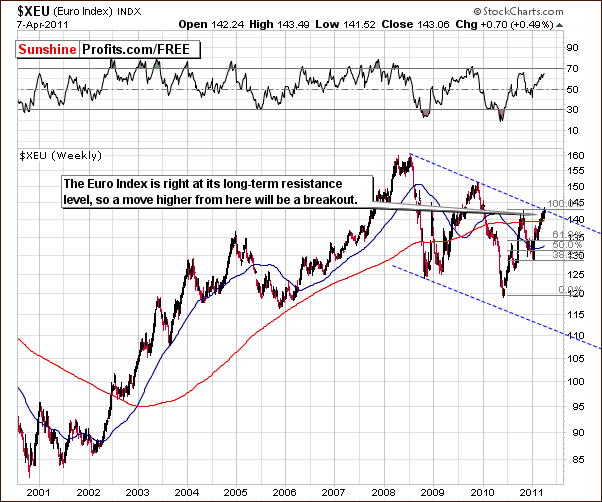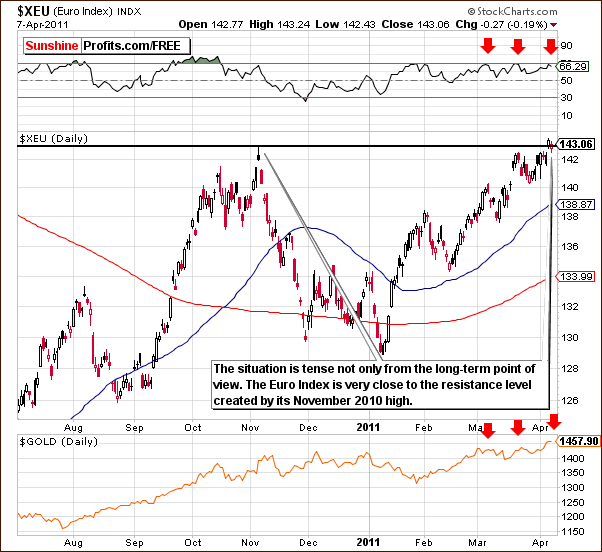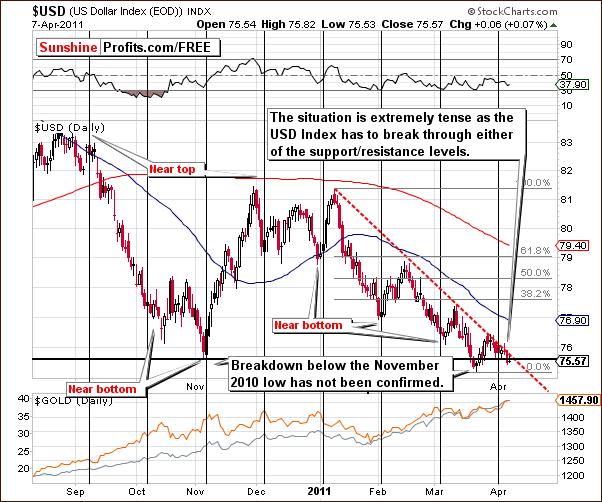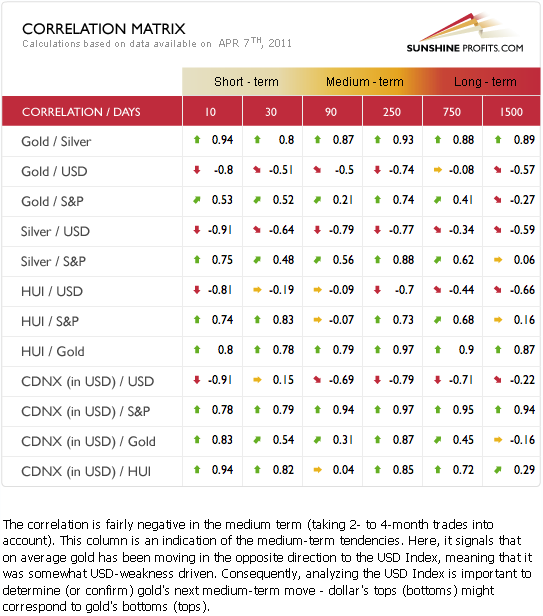Based on the April 8th, 2011 Premium Update. Visit our archives for more gold & silver articles.
Before moving on to the timing-related part of this essay (in fact a continuation of our previous essay Breakouts in Gold and Silver Prices), lets take a few moments to focus on the big picture. Namely, we would like to draw your attention to some interesting facts about the main point of our interest gold.
Demand for gold was always high from ancient civilizations. If we check in the Bible, gold is mentioned 417 times (according to Answers.com), underpinning importance of gold even centuries before. Here are some off the wall, unusual and even bizarre anecdotes about gold that show you that some things never change.
History is replete with famines, but have you ever heard about the Great Bullion Famine? It seems to have implications to todays economic situation.
During the years 1370-1420, various major mines around Europe become completely exhausted and gold and silver mining declined. Another big problem facing the West at that time was a trade deficit with China and India. Exotic luxuries such as spices, silks, and cotton were highly prized in Europe, but European products such as wool from England were not valued in the east. But what was valued then, as now, in the east was gold and silver and those sent to the east in payment for goods never to return in payment for exported European goods. Mints closed down all across Europe because of the lack of bullion. Gold coins gradually disappeared from circulation due to hoarding and the market was invaded by debased "black money", and the public turned increasingly to surrogate currencies and to simple barter.
The scarcity of bullion was one of the triggers of the Age of Discovery as Portuguese explorers sailed down the African coast to open new routes to sub-Saharan gold. Christopher Columbus in the diary of his first voyage mentions gold 65 times. After the discovery of silver in Latin America the bullion famine ended. But the Spanish monarchy had to learn the hard way that too much of a good thing can be a curse. They had dug up so much silver that the metal itself dramatically declined in value. What they failed to understand is that the value of precious metals is not absolute. Money, just like about everything else, is only worth what someone else is willing to give you for it. An increase of the supply, or today we call monetary expansion or quantitative easing, will merely make prices higher, or what today we call inflation.
So from the Great Bull Famine came a period called the Price Revolution which affected all of Europe from the 1540s for about 100 years. The cost of food rose dramatically. Rising food costs is also something that we are seeing today.
Niall Ferguson, in his book The Ascent of Money, wrote that when an American exchanges his goods or his labor for a fistful of dollars he is essentially trusting Ben Bernanke not to repeat Spains error and manufacture so many of these things that they end up being worth no more than the paper they are printed on.
All these indicate that economic growth and value of gold go hand in hand. To see how economic performance and gold market fluctuations tally currently, lets have a look into the currencies market and its relationship with gold. Lets begin with the long-term Euro Index chart (charts courtesy by http://stockcharts.com.)

Although its not visible on the above chart, the Euro Index has moved above the declining trend channel, which if confirmed will be a major breakout. This is, of course, be closely tied in an opposite manner to what happens in the USD Index.

In the short-term Euro Index, we have also seen a tense situation, after which (not visible on the chart) euro moved higher above levels that were seen last November. For several weeks, local tops in the Euro Index have coincided with those for gold as well. Now, with euro breaking out to new highs it seems that gold might finally be able to hold its recent gains.
Meanwhile, lets take a look at the USD Index chart.

In the long-term USD Index chart, we have also seen a mixed situation, which has just gained a bearish bias. Index levels were close to a cyclical turning point, so the move downward that were just seeing might be a big one.
The breakdown is still being verified, so we may in fact see a reversal to the upside, but that does not appear to be the most likely outcome.
With rising euro and declining USD, lets take a look at the possible implications for gold.

Please take a look at the 30-day column and the Gold-USD correlation. Actually, the current value of the coefficient is -0.61, which means that it has become even more negative in the past few days. This means that gold has on average moved in the opposite way to the USD Index, and since we know that people buy gold in order to hedge themselves against currencies depreciation, we might infer that a decline in USD Index is likely to be the cause of a rally in gold.
Summing up, the favorable situation in the yellow metal appears to be confirmed by the recent developments in Euro and USD Indices. The breakouts/breakdowns in the latter have not been verified yet, but the situation for gold remains bullish.
To make sure that you are notified once the new features are implemented, and get immediate access to my free thoughts on the market, including information not available publicly, we urge you to sign up for our free e-mail list. Sign up for our gold & silver mailing list today and you'll also get free, 7-day access to the Premium Sections on my website, including valuable tools and charts dedicated to serious PM Investors and Speculators. It's free and you may unsubscribe at any time.
Thank you for reading. Have a great weekend and profitable week!
P. Radomski
--
Gold and gold mining stocks have finally broken to new highs! How far are they likely to rally? In addition to thoroughly commenting on the current situation in the precious metals sector we reply to numerous questions that we have received this week. These are just some of the topic areas that we covered:
- With the end of QE2 approaching are the markets likely to descend into turmoil?
- Is $40 a valid target for silver?
- Can stocks continue to rally?
Additionally, the latest report includes our top gold & silver junior rankings along with the analysis of the SP Long-term Junior Indicator and the GDXJ:GDX ratio, which serves as a proxy for junior's outperformance relative to senior miners. We encourage you to Subscribe to the Premium Service today and read the full version of this week's analysis right away.

